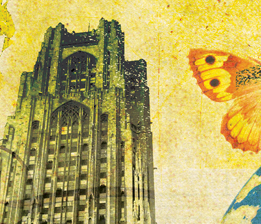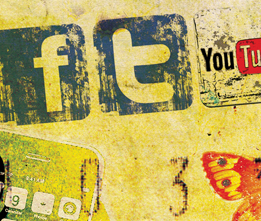 |
||||||
|
"None of this requires ‘dumbing down’ content. Quite the opposite: The services we offer guests must approach the high standards we already embrace for artistic and scientific study." - John Wetenhall
|
Making Museums Matter
Early this year, Carnegie Museums President John Wetenhall joined teams of trustees, staff, and community leaders to begin a strategic planning process by looking outside the four Carnegie Museums—at trends and best practices in the museum audience experience, financial management, and infrastructure. Here, the museum leader talks about the challenges and opportunities facing Carnegie Museums—and all museums—today. Anyone who follows news of cultural institutions understands the challenges of the past few years. The post-2008 recession cut staffs and budgets nationwide 10-20 percent on average; programs have been scaled back; and exhibition funds trimmed. Beyond recession, though, the very nature of annual funding is changing. Governments at all levels have slashed support to museums, their educational programs, and scientific research. Philanthropy is shifting away from institutional support toward social causes. Private giving is becoming more focused, targeted, and less predictable. Meanwhile, public demand for museum services has never been higher, escalating programming costs to serve children, families, and school systems. The competitive environment for staff drives costs higher, as do the physical demands of aging buildings requiring continuing maintenance and frequent major repairs. Beyond financial pressures, there is reason to believe that the demands of audiences themselves are changing, as new generations of the digital age become the new majority. And just how clear, anyway, are the lines between education, cultural experiences, and pure entertainment? So, as revenues recede, costs rise, and audience expectations increase, what should museums do? Facing the challenge: No better place than PittsburghAt Carnegie Museums, the first thing we need to do is recognize that Pittsburgh is a great place to face these challenges. The local economy is growing, especially the energy sector, which is bringing new companies to western Pennsylvania. Our great colleges and universities cultivate diverse student and faculty bodies, raise the level of policy debate, and serve as incubators for new businesses. Excellent hospitals provide care and comfort, as well as groundbreaking medical research, while a vibrantly supportive foundation community promotes worthy public initiatives.
The nature of museum audiences is changingThe digital world has profoundly changed audience expectations, particularly among young people who came of age logged on to Facebook. Years ago, printed text and still photos conveyed most information—think about the wall panels and text labels in most art galleries. Today, digital opportunities and expectations require multi-media content, preferably freshly made and immediately available. Museum time—often three to five years to organize an exhibition—has little meaning to people expecting up-to-the-minute information via Facebook, YouTube, and Twitter. And as time shortens, so too does the length of content. People trained to write dissertations, books, and scholarly articles find themselves in a world of video clips, blogs, and 140-character tweets! Our digital equipment is changing as well, as desktop computers yield in pop-ularity to iPhones and a host of handheld devices. And for the museum professional accustomed to delivering hour-long lectures, not only have TED talks (conferences available online) shortened presentations to 15 minutes, audience members expect to participate—even provide the content—as the old one-way lanes of museum communications have become two-way participatory streets. The visitor experience is crucialGalleries are to museums as classrooms are to universities: They are the heart of our existence, just as visitors are our lifeblood. Programs, research, publications, fundraising, and even building collection depth all support the experience we offer visitors.
The old museum model is not set up for these changes. But progressive institutions are changing with the times, making new investments in digital capacity and, just as challenging, transitioning staff priorities from the monographic tome to rich, real-time digital content. The convergence of entertainment and education has eroded the privileged place museums once held in people’s consciousness as well as the public budget. Museums today compete for audiences who demand more than just collections. They want convenient parking, a welcoming experience and clear orientation, courteous and informed employees, delicious food, captivating gifts and mementos, and maybe a coffee or wine bar with comfortable places to sit. More than anything, they want a vibrant experience—be it for a day alone, or with family or friends, or maybe even at an event where they can meet new people. None of this requires “dumbing down” content. Quite the opposite: The services we offer guests must approach the high standards we already embrace for artistic and scientific study. Solid financials depend on public valueUnderstand that there is no limit to how much museums can do. Virtually every educational program serves a worthy audience, and we can invent new programs faster than anyone can fund them. Exhibitions always need more and better objects; exciting collections come to market every day and, behind the scenes, the pending project list would take decades to complete.
Science centers and natural history museums must engage the public with the full potential of their knowledge and collections to tackle topics such as climate change, human health and nutrition, population growth, the sustainability of food and water, nano-technology, the wonders of the universe, and, here in Pittsburgh, by all means energy and the environment. Art museums are all about design and creativity—a vital component to our global competitiveness. They are also about imagination, societal issues, profound ideas, differences, and, yes, beauty. Museums that engage their publics in these vital human and humane concerns create for themselves a path toward their own sustainability. It is up to museums, then, to make themselves matter. Everyone can helpWe know that to provide the upgrades in visitor services that people expect—timely, interactive exhibitions, lively restaurants, vibrant stores, attractive signage, comfortable gathering places inside and out—we will need to invest. We must also raise funds to revamp our aging gallery spaces. Some of our greatest treasures of art and science require new and engaging interpretation. And we must build the capacity to create and show digital imagery and audio content to exploit and fully share the knowledge and passion of our wonderful professional staff. These projects will take contributions large and small. As an organization, we are prioritizing projects so that donors of all capacities can participate in the revitalization of our four museums. We are also taking a serious look at our current programs and behind-the-scenes operations to assure that we manage our resources with the fullest care for efficiency as well as quality. Our museums have inventoried and prioritized required maintenance projects so that we can preserve our civic treasures for the long term. Most important, through our strategic planning process, we have reached consensus that you, our members, and all of our public audiences must have better access to the indescribably valuable treasures we preserve—not just for passive viewing, but for understanding, inspiration, and wonder! How Can You Help?
Visit and bring your friends and family—explore the treasures on public view. Renew and upgrade your membership—membership proves public support. Buy gift memberships—enrich friends and family with experiences throughout the year. Remind political leaders that museums are public assets—culture seems like an easy cut, unless your priority is to invest in a great community for the long term. Send the children in your life to art camps and special programs—they’ll have a great time and you’ll feel better knowing that your gift could inspire lifelong interests. Support school field trips—museums turbo-charge the classroom experience. Join a museum support group—enjoy “insider” experiences and make new friends. Make a special contribution—museum staff will gladly steer you to exciting, worthwhile projects that meet your aspirations and budget. Remember museums in your estate—great museums are built over time, often through the generosity of people who enjoyed them for a lifetime.
|
|||||
Ripped from the Headlines · The Advent of Modern Global · Drilling for Data · Director's Note · NewsWorthy · Face Time: Robert Marshall · Science & Nature: Women’s Work · Artistic License: Personal Pop · First Person: A Feathered Face of Forest Fragmentation · The Big Picture
 |
Copyright © 2017 CARNEGIE Magazine. All rights reserved. |




